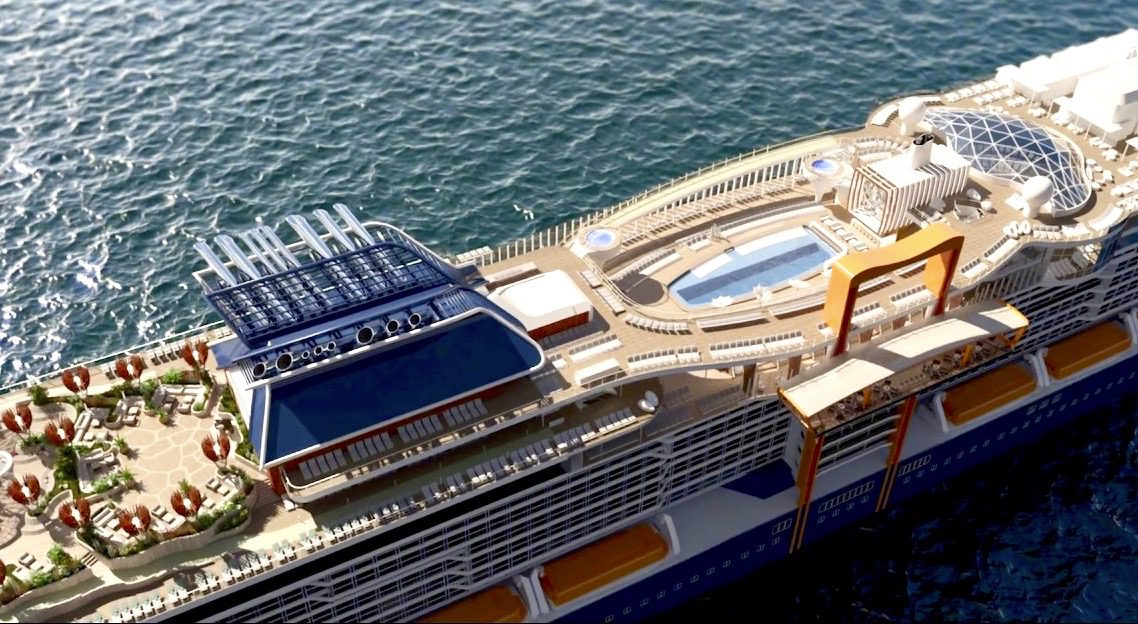Table Of Content

While smaller ships may have small refrigerators that can accommodate one or two bodies, larger ships may have more spacious facilities. In case of space constraints, crew members may utilize alternative options, such as walk-in freezers, to store the deceased until they can be transferred to shore. The morgue is staffed by the ship’s doctor and a nurse medical team, providing professional care and support during such unfortunate circumstances. Since cruise ships are like portable, miniature cities, having a morgue along with various other services makes perfect sense. While no one likes to think about someone dying while cruising the open seas, death is a natural process that can occur at any time. "Care Team members are trained to deal with grieving people, but they are not grief counselors," the Carnival spokesperson said.
What Happens When Someone Dies on a Cruise Ship?
WATCH: The real reason behind 'ice cream parties' on cruise ships will shock you - IOL
WATCH: The real reason behind 'ice cream parties' on cruise ships will shock you.
Posted: Mon, 26 Feb 2024 08:00:00 GMT [source]
However, it’s essential to be informed about the procedures and facilities available, such as the presence of a cruise ship morgue. Operation Bright Star is a code some cruise lines use to alert the medical team that a passenger has an urgent medical emergency, such as a stroke, seizure, or heart attack. The crew can use the I-95 to access various cruise ship areas, like the engine control room, the laundry facilities, and their cabins. You’ll find everything stored there, from alcohol, food, and shipping equipment. It gets its name from the Interstate 95 highway running along the United States east coast.
Why Do Cruise Ships Have Morgues?

If I test positive for COVID-19 while in the Dominican Republic, I would receive traveler support and be subject to quarantine protocols. The specific details and procedures would be determined by the local health authorities. The commitment to safety is emphasized by David Collado, the Minister of Tourism of the Dominican Republic. The country values the safety of both visitors and Dominicans involved in the tourism industry.
Follow-Up and Aftercare Services
The cruise line will assist with funeral arrangements, but the responsibility falls on the family. To participate in the ash scattering ceremony, families must book the cruise as normal and bring the urn containing their loved one’s ashes. It’s important to note that cruise ships don’t offer immediate burial at sea, and the family can’t request it.
This is to minimise the number of guests that see the body and potentially be upset. It’s important to be prepared for all eventualities when planning your vacation, and knowing what to do in the event of a death is one of them. It could be worth finding out how they assist in the event of needing repatriation, as this can be quite an involved process and overwhelming at this emotional time.
More from The Times and The Sunday Times
Larger ships tend to have larger morgues, as they accommodate more passengers. Overall, the free health care plan for international tourists in the Dominican Republic provides significant benefits and offers peace of mind during their stay. These cruise ship memories are etched in my mind forever, connecting me not only to the magic of the sea but also to the pioneers of the cruising industry like Bill Panoff. Our examination of the investigation by cruise lines into deaths onboard reveals critical aspects that demand scrutiny. The cruise line ensures that the transfer of the deceased is done with sensitivity and respect for the family's emotional needs. Prompt notification is given to family members, who are then responsible for making arrangements for the repatriation of the deceased's remains upon reaching the next port.
The captain will then pass orders for the next of kin to be contacted and arrangements for the body to be transported back to shore. The location of the morgue is not usually shown on the ship’s deck plans. Larger vessels may have space for up to 6 bodies, maybe more in some in cases, but to need the use of them all would be a rare occurrence. Here are five unexpected features on ships, some of which you hopefully won’t discover on your own. Did you know that most travelers don’t need a negative test before going there?
Similarly, the code word “Operation Bright Star” is a secret code that refers to serious medical emergencies requiring immediate medical attention. They can drive the travel companions to a nearby hotel if they want to disembark and remain with them until they return home. While the service is free, travelling with the cruise line is not, so you would need to book a cruise as normal. You’d also need to make sure that the ashes were brought on board in a biodegradable urn that is completely sealed.
In a high profile example of one such incident, in September 2013, British journalist Sir David Frost died aboard the Cunard cruise liner the Queen Elizabeth, on which he was booked as a speaker. A source told The Telegraph that the ship's guests "were mostly British and took the sad news without emotion." Neither the consulate nor the cruise line pays for anything related to bringing a loved one home; they only help the family make arrangements. And repatriation, with all its necessary paperwork and hassle, is not inexpensive. If the cruise has a religious leader such as a priest on board, they may also be involved to offer support. Once an appropriate port is found, the body will usually be disembarked from the ship in the early hours of the morning, one of the first things to happen once the ship has docked.
If a passenger or crew member passes away while onboard, the ship’s crew will respond promptly and provide immediate medical attention if needed. They are trained to handle such situations and prioritize the well-being of all those onboard. The Gifford family's enduring bond with Carnival Cruise Line showcases how shared experiences in entertainment and travel can bridge the gap between iconic personalities and renowned cruise brands.
“Operation Bright Star,” is used for serious medical issues, while “Operation Rising Star,” is used in the event of a death on board. Among these emergency codes are “Charlie” for security threats, “Delta” for bio-hazard in some cruise lines, and “Bravo” for a fire emergency in most cruise lines. For example, while Royal Caribbean ships use “Alpha” for medical emergencies, Carnival ships use it for fire emergencies.
Adhering to professional protocols ensures that the scene is handled with care and sensitivity, maintaining the necessary chain of custody for any future investigations. Security measures are in place to prevent any tampering or disturbance of the area until the investigation procedures are completed. Oceangoing ships will usually have some sort of medical facility on board, but it shouldn’t be thought of as a hospital, because it’s simply not as well equipped. Typically it will carry life-saving equipment such as defibrillators and oxygen, some medication and first-aid kits. Larger ships will be better equipped, and may have wheelchairs, stretchers and monitors. The team will conduct their interviews and investigations similarly to how they would on land, they may look at CCTV, question other passengers, and analyze the crime scene.
The suspects may be held in a small brig on the ship until local authorities arrive. First, ship officials must notify port authorities, and have onboard medical personnel immediately examine the body. Additionally, all staff must be trained to handle both the logistics of disembarking a body and the emotional needs of fellow passengers and loved ones.
When a death occurs on a cruise ship, the discreet code known as 'Operation Rising Star' is utilized. This code is part of emergency protocols, aiding in a sensitive and efficient response. Upon the occurrence of an onboard incident, the cruise line promptly initiates an investigation to determine the cause of death, a process primarily aimed at safeguarding its own interests. This investigation delves into the medical care provided, potential liability concerns, and any suspicious circumstances surrounding the incident. This process is executed with utmost care and respect, aligning with established protocols for handling the deceased on a cruise ship. The morgue facilities, integral to the vessel's emergency response strategy, can accommodate 2-3 bodies on smaller ships and up to 10 on larger ones.
Cruise Hive was established back in 2008 and among the earliest blogs in the industry. Since the start, it's been our aim to provide the latest cruise news covering all the major cruise lines. We make sure cruisers are fully prepared for their cruise vacation with tips on ships and ports.Millions of travelers rely on Cruise Hive in the United States, Europe, Australia, and around the world. Morgues are usually kept on the lower level, away from guests, and can accommodate three to six bodies at once. A cruise ship and its crew are always prepared for any type of instance that can occur and always strive to take care of it in a professional, dignified manner. Their job is to assist with details of repatriating the deceased passenger and contacting a funeral home.
Many passengers on a cruise are in their older years and perhaps in ill health but still trying to enjoy their life to the fullest. Depending on the circumstances, most passengers put in the brig will stay there until they can be handed over to law enforcement officials. I’m impressed by the commitment of the tourism industry in the Dominican Republic.

No comments:
Post a Comment